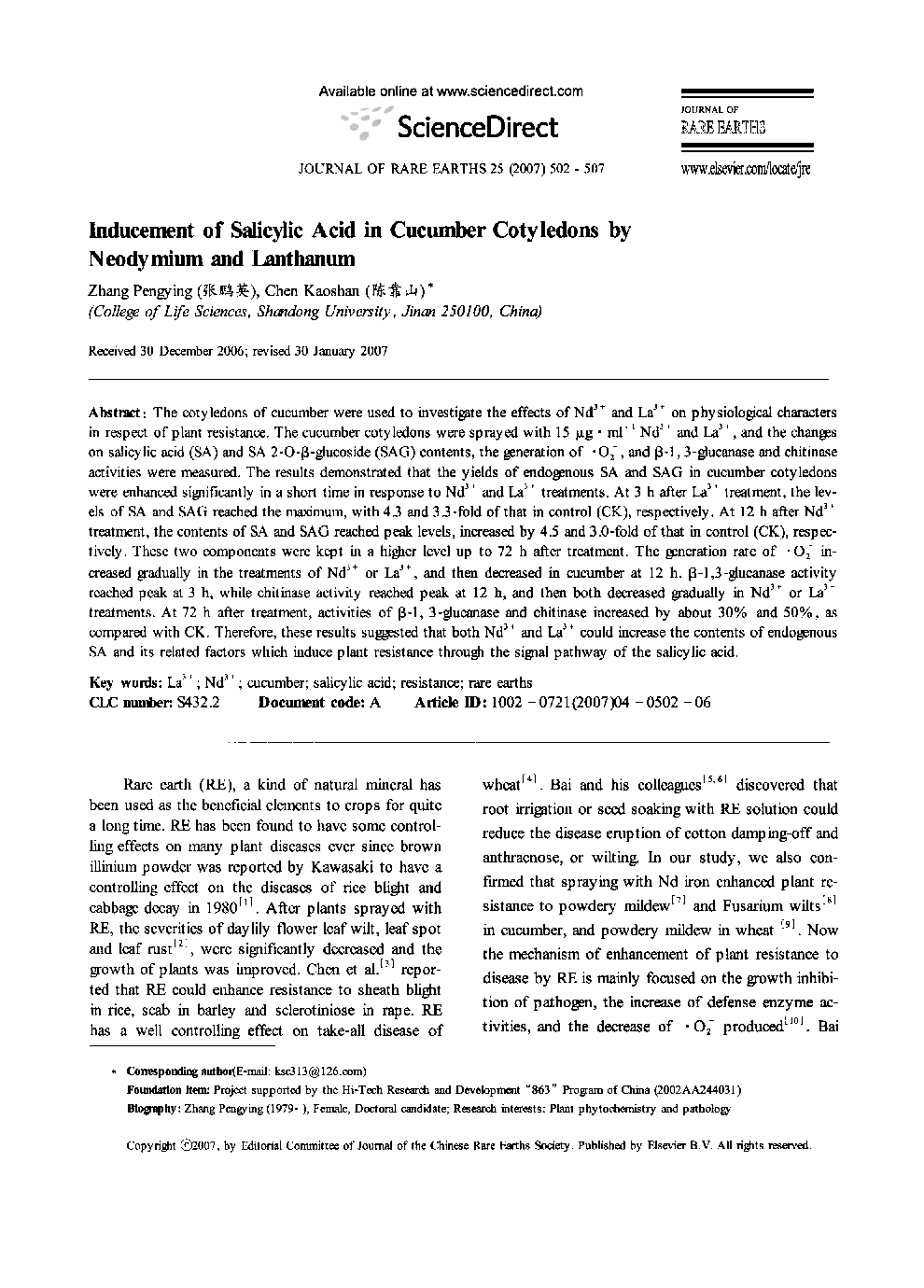| Article ID | Journal | Published Year | Pages | File Type |
|---|---|---|---|---|
| 1259852 | Journal of Rare Earths | 2007 | 6 Pages |
The cotyledons of cucumber were used to investigate the effects of Nd3+ and La3+ on physiological characters in respect of plant resistance. The cucumber cotyledons were sprayed with 15 μg · ml−1 Nd3+ and La3+, and the changes on salicylic acid (SA) and SA 2-O-β-glucoside (SAG) contents, the generation of · O2−, and β-1, 3-glucanase and chitinase activities were measured. The results demonstrated that the yields of endogenous SA and SAG in cucumber cotyledons were enhanced significantly in a short time in response to Nd3+ and La3+ treatments. At 3 h after La3+ treatment, the levels of SA and SAG reached the maximum, with 4.3 and 3.3-fold of that in control (CK), respectively. At 12 h after Nd3- treatment, the contents of SA and SAG reached peak levels, increased by 4.5 and 3.0-fold of that in control (CK), respectively. These two components were kept in a higher level up to 72 h after treatment. The generation rate of · O2− increased gradually in the treatments of Nd3+ or La3+, and then decreased in cucumber at 12 h. β-1,3-glucanase activity reached peak at 3 h, while chitinase activity reached peak at 12 h, and then both decreased gradually in Nd3- or La3- treatments. At 72 h after treatment, activities of β-1, 3-glucanase and chitinase increased by about 30% and 50%, as compared with CK. Therefore, these results suggested that both Nd3+ and La3+ could increase the contents of endogenous SA and its related factors which induce plant resistance through the signal pathway of the salicylic acid.
